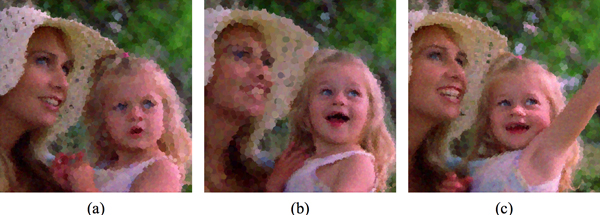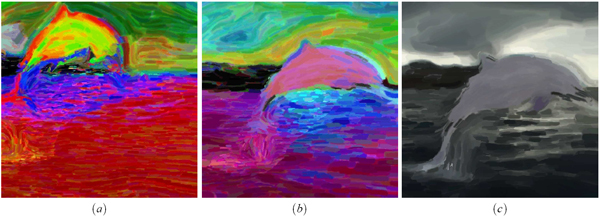Video Painting with Space-Time-Varying Style Parameters
[View this page in Thai]
[View this page in Kazakh]
[View this page in Hungarian]
[View this page in Polish]
Mizuki Kagaya, William Brendel, Qingqing Deng, Todd Kesterson, Sinisa Todorovic, Patrick Neill, and Eugene Zhang
IEEE Transactions on Visualization and Computer Graphics, vol. 17(1), 2011, pp. 74-87.
Paper (PDF, 3.38Mb).
Video (MOV, 197Mb).
This material is based upon work supported by the National Science Foundation under Grant No. CCF-0546881.
Any opinions, findings and conclusions or recomendations expressed in this material are those of the author(s) and do not necessarily reflect the views of the National Science Foundation (NSF).
Abstract
Artists use different means of stylization to control the
focus on different objects in the scene. This allows them to portray
complex meaning and achieve certain artistic effects. Most
prior work on painterly rendering of videos, however, uses only
a single painting style, with fixed global parameters, irrespective
of objects and their layout in the images. This often leads to
inadequate artistic control. Moreover, brush stroke orientation is
typically assumed to follow an everywhere continuous directional
field. In this article, we propose a video painting system that
accounts for the spatial support of objects in the images or video,
and uses this information to specify style parameters and stroke
orientation for painterly rendering. Since objects occupy distinct
image locations and move relatively smoothly from one video
frame to another, our object-based painterly rendering approach
is characterized by style parameters that coherently vary in space
and time. Spatiotemporal coherence of varying style parameters
enables more artistic freedom, such as emphasis/deemphasis,
increase or decrease of contrast, exaggeration or abstraction of
different objects in the scene in a temporally coherent fashion.
Figures
1. With varying style parameters, constrast between different parts of the flowers is increased, and different level of details can be achieved.

2. Varying style parameters over time to achieve RACK FOCUS.

3. Varying style parameters to achieve transitions from stress to calmness.






